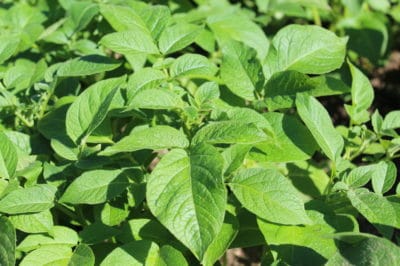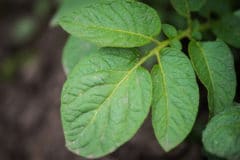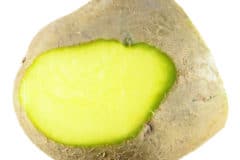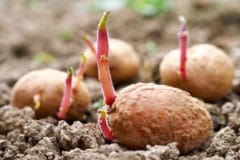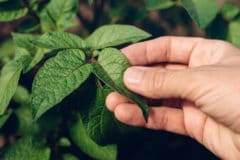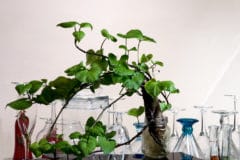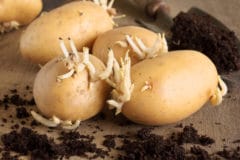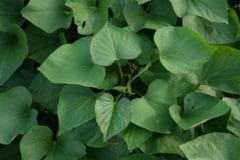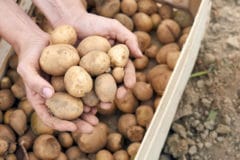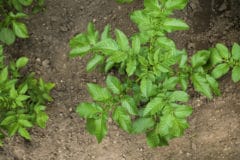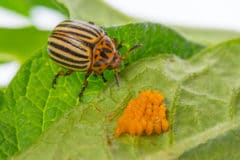Potato Leaves of All Kinds
All types of potato plants grow leaves above ground. These leaves tend to be broad and attractive, and serve more purpose than just collecting sunshine for your plants. The condition of the leaves on your potato plants will let you know if your plants are infested by insects, lacking in nutrition or water, and when they’re ready for harvest.
What to Watch the Leaves For
If your potato plants leaves are turning yellow, this can be an indicator of verticillium wilt, which can ultimately kill your potatoes. Other causes of yellowed leaves can include fusarium (a type of infection) and potato psyllids, which are related to aphids.
Any leaf discoloration or malformation can indicate a problem, disease, or infestation. If some research doesn’t answer your questions, consult your local university extension office or a nursery.
Eating Leaves
Some potato plants grow leaves that are well worth eating, too. Sweet potatoes, in particular, are known to provide tasty, healthful leaves that can be added to dishes and salads for a change of pace. Removing your plant’s leaves will not harm the potato developing below the surface.
Leaves Indicate Harvest Time
When you look out on your potato patch and notice that your previously healthy potato foliage is beginning to dry out, it may be close to harvest time. Should you notice the browning and wilting of your potatoes’ leaves, check the calendar to see if enough time has passed for harvesting.
Some Warnings
While potato leaves are entirely edible, the shoots and stalks of the potato are not. These contain a toxic substance, solanine, that can cause symptoms such as nausea and vomiting. Solanine is the substance that also makes potatoes turn green when they are exposed to sunlight.
Other plants have parts that contain solanine, too, including:
- Tomatoes
- Apples
- Cherries
- Blueberries
- Artichokes
- Okra
Clearly, the solanine in potato stems and shoots is not likely to be toxic, but it’s likely to make you uncomfortable if consumed in larger quantity. When choosing to eat the leaves of any potato plant, be sure to remove the stems prior to consumption.
Your potato plant is a great source of flavor, texture, nutrition, and variety for more than just the tuber it produces; potato leaves can add an extra dimension to your diet.
